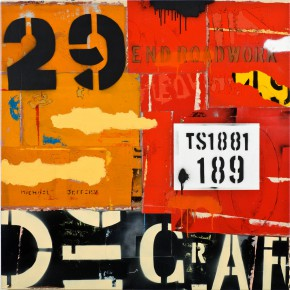 |
| Banksy |
 |
| Amsterdam /street /art |
 |
| Anthony Freda |
Art, I feel, is a powerful instrument in order to get a point across quickly and effectively. In a matter of seconds a thought can be projected. All of these artists demonstrate this and for my final piece I wanted to achieve the ability to 'speak' to the viewer and maybe even create some questions.
Daniel Shiel creates art using different photographs of parts of buildings and puts them together creating a colourful, gritty, urban style collage.
Michael Jeffery creates his art by use of spray paint, stencils and paint skins. I love his use of numbers and letters and how they 'make' the art complete.
Thirdly I will enclose some photographs of my own to show, over the year, different things that have captures my attention and imagination.
These a just some of the photographs taken around Manchester. I suppose they are of 'found incidental Art'. All have words and are communicating something to the viewer. However the fact that some of the words are now unrecognisable appeals to me also.
Finally I have decided to include a billboard that I came across in the Whitechapel area of London, and the photograph after I had altered the image on photoshop. Billboards, like this one, I feel, deliver so many different forms of art from so many different types of people. From the big men who sit in expensive chairs in security riddled tall buildings who want to send a message to the plebs, the graphic designers who created the worn images on the posters, the persons who partially boarded up the billboard because they were told to by the council, to the 'vandaliser' on the street.
All of these images and artworks have given me much inspiration over the course of the year. I hope I have shown the connection between these works and images and my final piece on Order/Chaos.




























